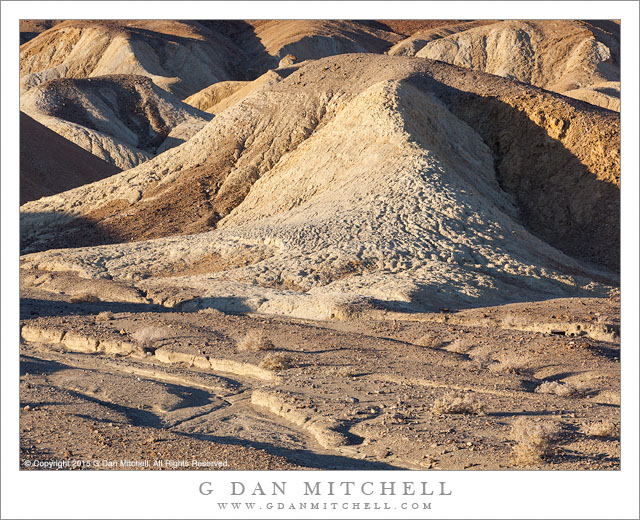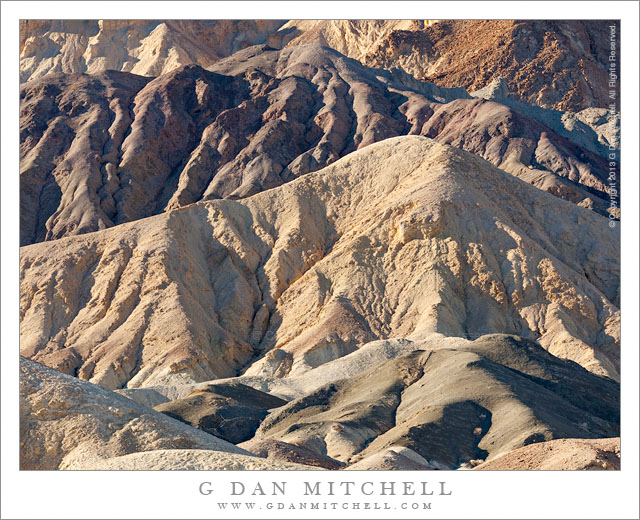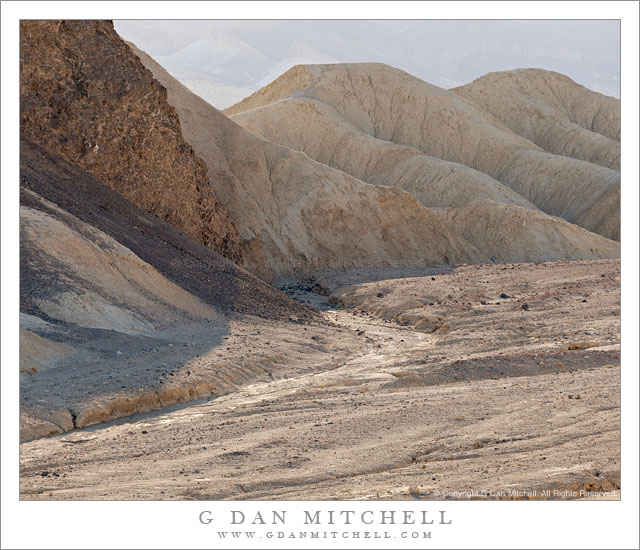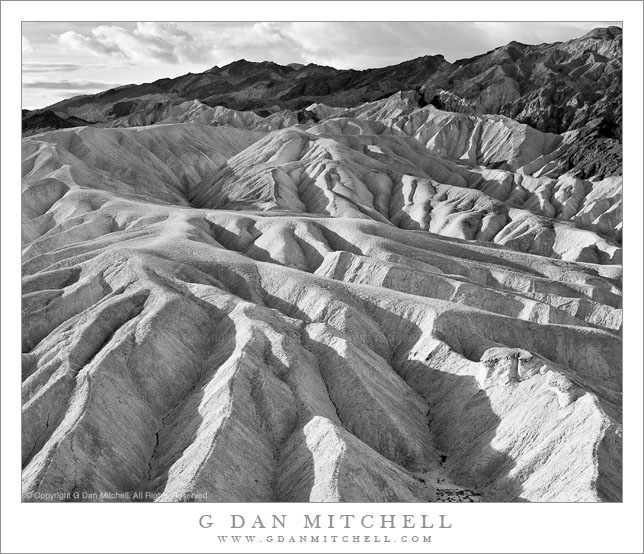
Wash and Eroded Hills. Death Valley National Park, California. April 3, 2015. © Copyright 2015 G Dan Mitchell – all rights reserved.
Morning light shines on eroded hills and a desert wash.
This was the final morning of my spring photographic excursion to Death Valley. On the last day of these visits I always seem to follow the same general ritual — I get up well before dawn (of course!) and visit one final photography location very early, then go back and break camp before leaving the park and starting the long drove back to the San Francisco Bay Area. This means that I almost always pick a familiar “sure thing” location for the last morning, and one that is not too far from wherever I camped the night before. I rarely make this a spur-of-the-moment decision, instead typically deciding ahead of time where I’ll go — there isn’t a lot of time to waste on this final, long day. On this trip I headed back to a little area not far from a familiar Death Valley icon. (I would stop at that icon, but only if the conditions turned out to be spectacularly unusual — I certainly don’t need another photograph of it otherwise, as beautiful as it is.)
I turned off the main road onto the gravel side road, slowed to a crawl, parked and got out with camera gear in hand, and quickly settled into the quiet and stillness of this place in the moments before dawn. Even though I have been to this spot many times, I’m still surprised by how quiet it is and by how few others go here. Although I know specific locations that might offer reliable and predictable photographs, once I’m here I prefer to take my time and look for and at things that I had not previously noticed. At first — and it was the case on this morning — it seems like there is little special to see, and I may momentarily wonder if I’m going to be able to find photographs. But as I slow down and begin to see, I invariably find things that I would have missed if I had not given the place some time. This photograph was the result of spotting a little path up to a higher spot — the path itself intrigued me so I followed it, and I was happy to find that it overlooked this little bit of classic Death Valley geography.
 G Dan Mitchell is a California photographer and visual opportunist whose subjects include the Pacific coast, redwood forests, central California oak/grasslands, the Sierra Nevada, California deserts, urban landscapes, night photography, and more.
G Dan Mitchell is a California photographer and visual opportunist whose subjects include the Pacific coast, redwood forests, central California oak/grasslands, the Sierra Nevada, California deserts, urban landscapes, night photography, and more.
Blog | About | Flickr | Twitter | Facebook | Google+ | 500px.com | LinkedIn | Email
Text, photographs, and other media are © Copyright G Dan Mitchell (or others when indicated) and are not in the public domain and may not be used on websites, blogs, or in other media without advance permission from G Dan Mitchell.



